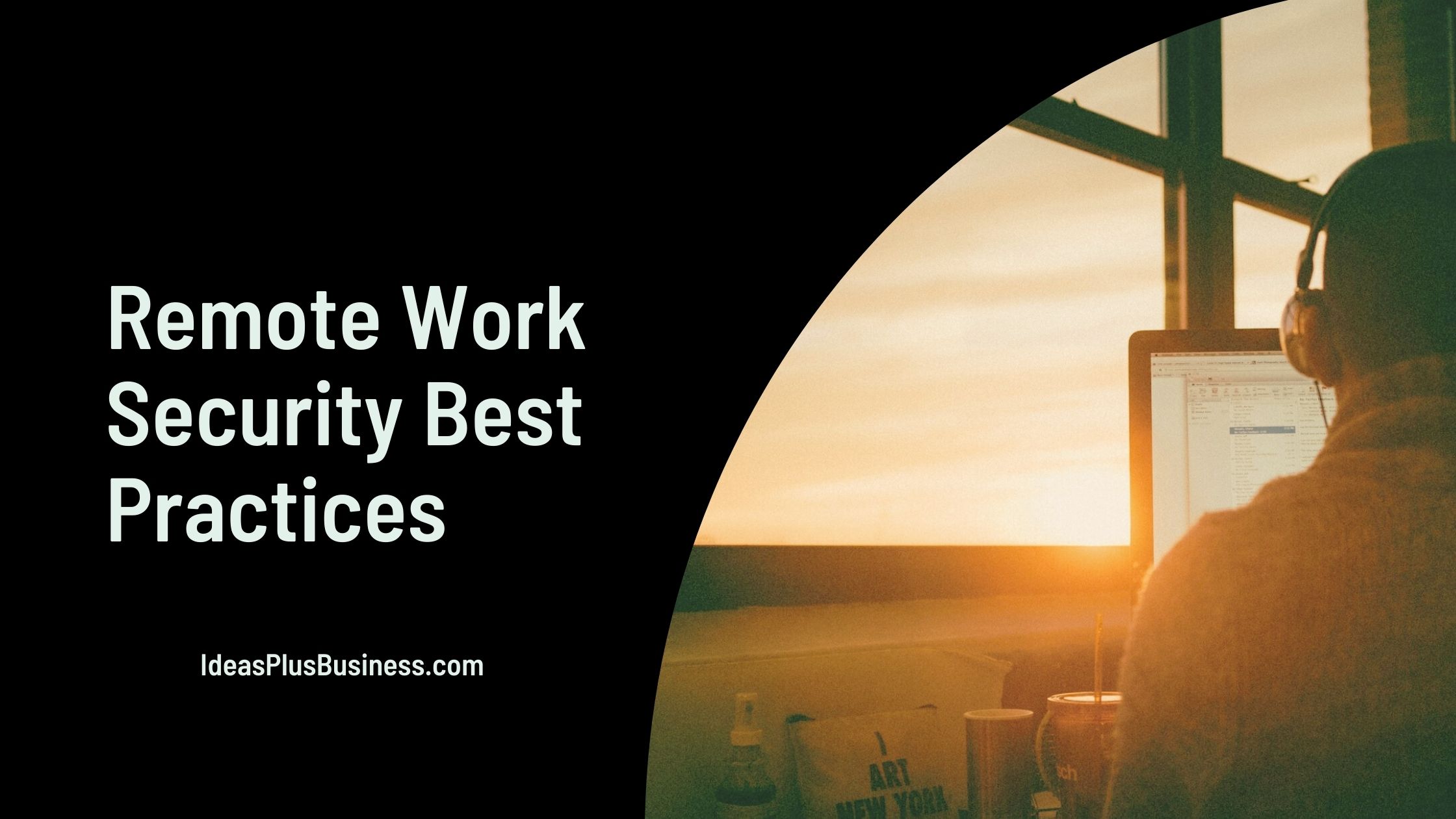The growth of the remote workforce has been revolutionary. With the freedom to work from anywhere comes a new set of remote work security risks and challenges.
As the lines between office and home reduce, securing your remote workforce has never been more critical. This article will delve into innovative strategies to ensure that your team remains protected without sacrificing the flexibility that remote work offers.
The Evolution of Remote Work Security
Remote work security has been on a journey to keep pace with the growing popularity of remote work arrangements.
Remote work is not just a trend; it is a transformation. But as we change, the sophistication of cyber threats has evolved in tandem.
The initial days of simple antivirus software and firewalls are long behind us. Today, securing a remote workforce demands a proactive and layered approach to security.

Here is a breakdown of the evolution of remote work security:
Early Days (Pre-2010s)
- Remote work wasn’t as widespread, so security concerns weren’t a major focus.
- Security measures primarily revolved around basic practices like access controls for internal networks and password complexity.
- Businesses with remote workers might have issued them dedicated laptops with pre-installed security software.
The Rise of Cloud and Increased Remote Work (2010s)
- Cloud computing became prominent, introducing new security challenges like data breaches on cloud servers.
- Focus shifted towards securing data in transit and at rest, with encryption becoming a key element.
- Multi-factor authentication (MFA) started gaining traction to add an extra layer of security beyond passwords.
- Businesses began implementing policies for Bring Your Own Device (BYOD) programs to address the security risks of personal devices accessing work data.
The Remote Work Boom (2020s)
- The COVID-19 pandemic forced a rapid shift to remote work, highlighting existing security vulnerabilities.
- Phishing scams and malware attacks targeting remote workers increased significantly.
- The need for robust security awareness training for employees became crucial.
- Secure remote access solutions like Virtual Private Networks (VPNs) became essential for secure data transmission.
- Zero Trust security models, where access is granted based on a “least privilege” principle, gained popularity to minimize potential damage from breaches.
Looking Ahead
The future of remote work security likely involves:
- Increased adoption of cloud-based security solutions like Cloud Access Security Brokers (CASBs) for better data protection.
- Integration of artificial intelligence (AI) and machine learning for real-time threat detection and prevention.
- A growing emphasis on user behavior monitoring and endpoint security to identify and address insider threats.
- Continuous improvement of security protocols and employee training to stay ahead of evolving cyber threats.
Remote work security is a constantly evolving field as technology advances and cybercriminals develop new tactics. Businesses and employees need to stay informed and adapt their security practices to ensure a safe and productive remote work environment.

Remote Work Security Best Practices
Here are some remote work security best practices both employers and employees can adopt today:
1. Understanding the Threat Landscape
The digital domain is a battleground, with remote workers often at the frontline. Cyber threats ranging from phishing scams to advanced persistent threats (APTs) constantly test the defenses of remote work infrastructures.
Understanding these remote work security threats is the first step in developing an impenetrable defense strategy.
2. Securing Connections: Beyond the VPN
Virtual Private Networks (VPNs) have been the backbone of remote work security, ensuring secure connections between remote devices and company resources. However, the security landscape requires going beyond traditional VPNs.
Implementing advanced encryption and secure access service edge (SASE) models can further fortify remote work connections against interception and intrusion. While technology plays a crucial role in securing digital environments, the assistance of experienced IT professionals is invaluable.
For those seeking comprehensive solutions, IT Support Burbank provides tailored services that can address the unique challenges faced by businesses operating remotely, enhancing their overall security posture without compromising operational flexibility.
3. The Pillars of Remote Work Security
Here are the pillars of remote work security:
- Identity and Access Management (IAM): Ensuring that only authorized users can access certain information by implementing multifactor authentication and rigorous access controls.
- Data Protection: Employing encryption and data loss prevention techniques to protect sensitive information, no matter where it is accessed from.
- Endpoint Security: Keeping remote devices secure through up-to-date security software, regular vulnerability assessments, and patch management.
- Security Awareness Training: Regular training for employees on the latest security threats and best practices.
4. Empowering Remote Workers as Security Assets
One of the most effective strategies in securing a remote workforce is transforming every employee into a security asset. This involves comprehensive training on recognizing potential threats and fostering a culture of security.
Equipping remote workers with knowledge and awareness turns them into the first line of defense against cyber threats.
5. Adopting a Culture of Security
More than just technology, securing a remote workforce is about cultivating a culture of security. This encompasses regular security training, fostering open communication about potential threats, and encouraging employees to practice safe online behaviors.
By creating a workplace environment where security is everyone’s responsibility, businesses can significantly mitigate the risk of cyber threats.
6. Innovative Security Technologies
As technology advances, so too do the solutions available for securing a remote workspace.
Innovative security technologies such as artificial intelligence (AI) and machine learning can predict and neutralize threats before they occur, providing an additional layer of protection. Integrating these modern tools into your security strategy can dramatically enhance your team’s defense mechanisms.
7. Effective Incident Response Plans
Despite best efforts, security breaches can still happen. An effective incident response plan is crucial for minimizing damage and restoring operations quickly.
This includes clear protocols for identifying, reporting, and resolving security incidents, as well as regular drills to ensure that your team is prepared for real-world breaches.
8. Sustainable Security Practices
Securing a remote workforce is not a one-time effort but a continuous process that evolves with the increasing sophistication of cyber threats.
Sustainable security practices, including regular updates to policies, continuous employee training, and periodic security audits, are essential for maintaining long-term protection in a changing digital landscape.

Remote work security risks
Remote work, while offering flexibility, introduces new security challenges for both businesses and employees. Here are some of the most common remote work security risks:
- Unsecured connections: Public Wi-Fi networks are convenient, but they are often not encrypted. If a remote worker accesses company data on an unsecured network, hackers can potentially steal information.
- Phishing scams: Phishing emails are a major threat, and remote workers can be especially vulnerable. These emails try to trick the recipient into clicking malicious links or downloading attachments that infect devices with malware.
- Weak passwords and access controls: Simple passwords and a lack of multi-factor authentication make it easier for unauthorized users to access company accounts and data.
- Outdated software: Unpatched software vulnerabilities are prime targets for hackers. Without regular updates, remote devices become more susceptible to malware and other threats.
- Data loss: Sensitive data can be accidentally lost or stolen if not stored securely. This can happen if personal devices are used for work or if data is transferred unencrypted.
- Insider threats: Unfortunately, even remote employees can be a security risk. Disgruntled workers or those with malicious intent could steal or leak sensitive data.
- Video conferencing vulnerabilities: Video conferencing platforms are a popular tool for remote communication, but they can have security flaws. Unsecured meetings or those with weak passwords could allow unauthorized access.
By understanding these risks, businesses and employees can take steps to mitigate them and create a more secure remote work environment.
Conclusion
The task of securing a remote workforce is complex but far from insurmountable. By understanding the evolving security threats, empowering remote workers, securing data connections, fostering a culture of security, and continuously adapting to new technologies and threats, businesses can protect their digital workspace.
As we continue to embrace remote work, let us also embrace the responsibility of securing it, ensuring that it is both a place of freedom and safety.

I am Adeyemi Adetilewa, an SEO Specialist helping online businesses grow through content creation and proven SEO strategies. Proficient in WordPress CMS, Technical Site Audits, Search Engine Optimization, Keyword Research, and Technical Writing (Portfolio).
I help brands share unique and impactful stories through the use of public relations, advertising, and online marketing. My work has been featured in the Huffington Post, Thrive Global, Addicted2Success, Hackernoon, The Good Men Project, and other publications.

